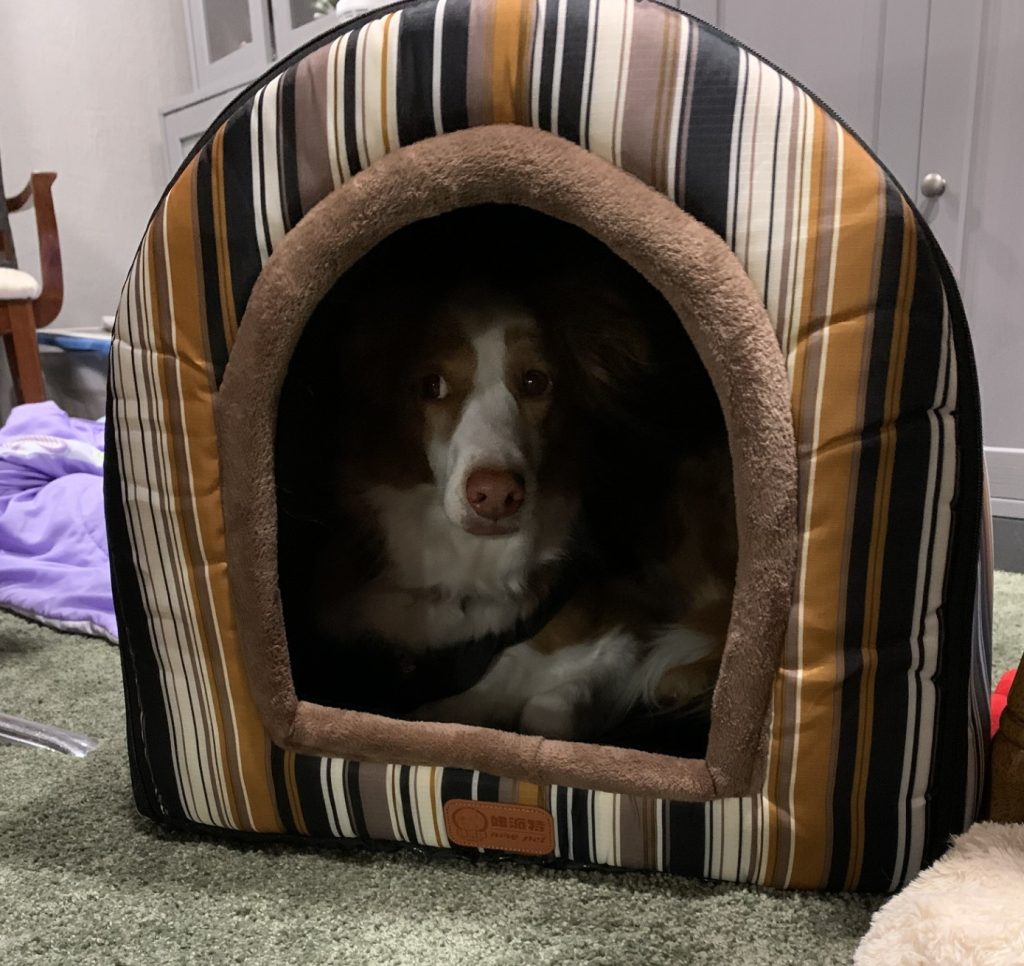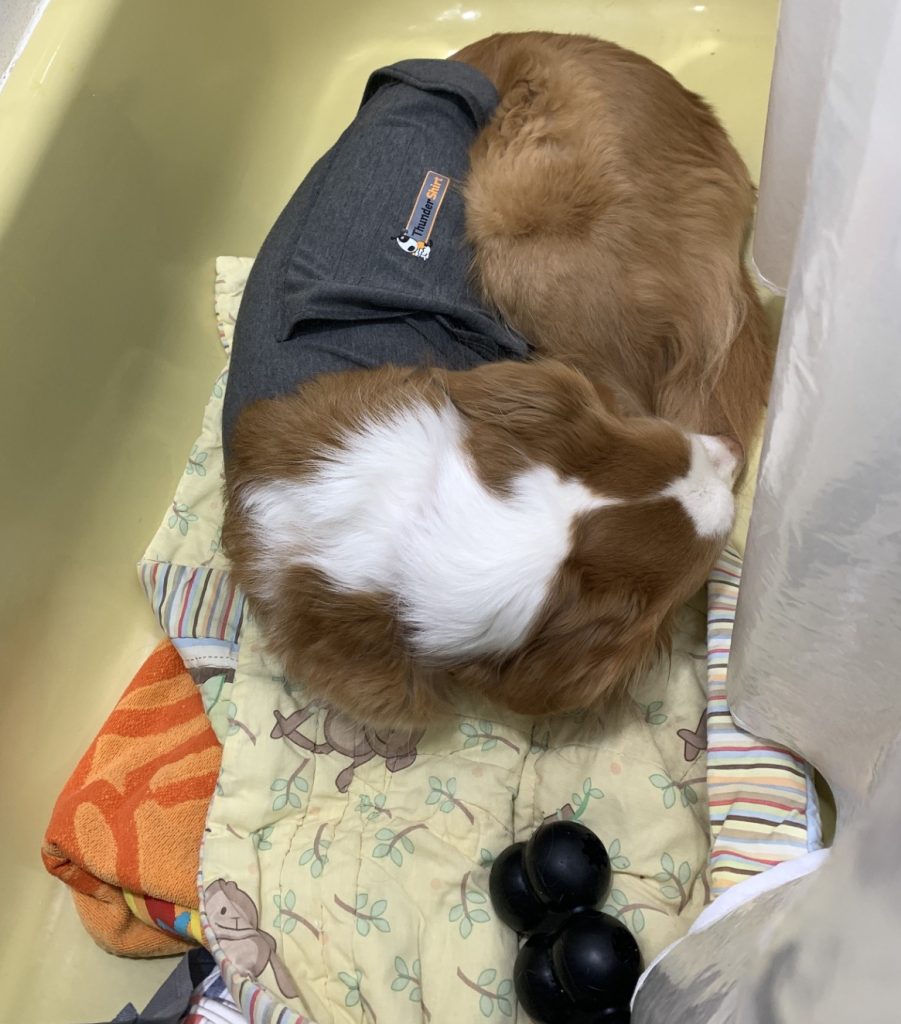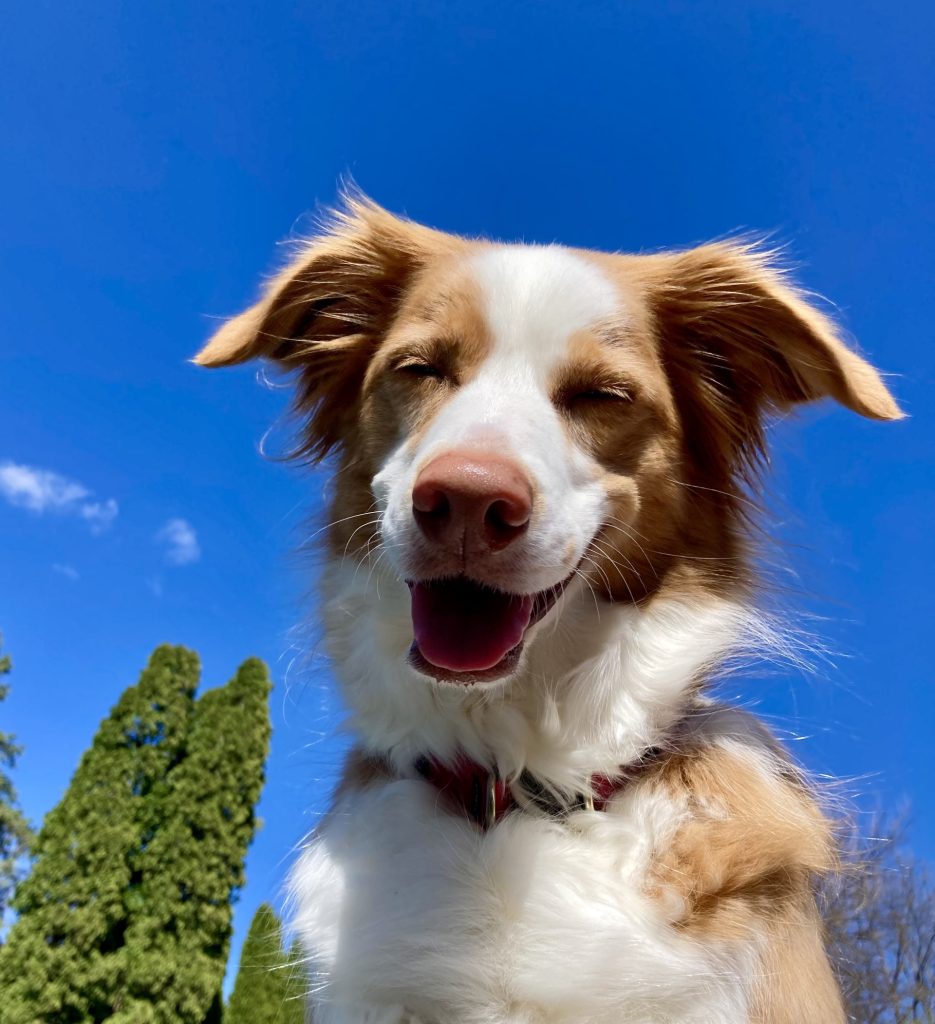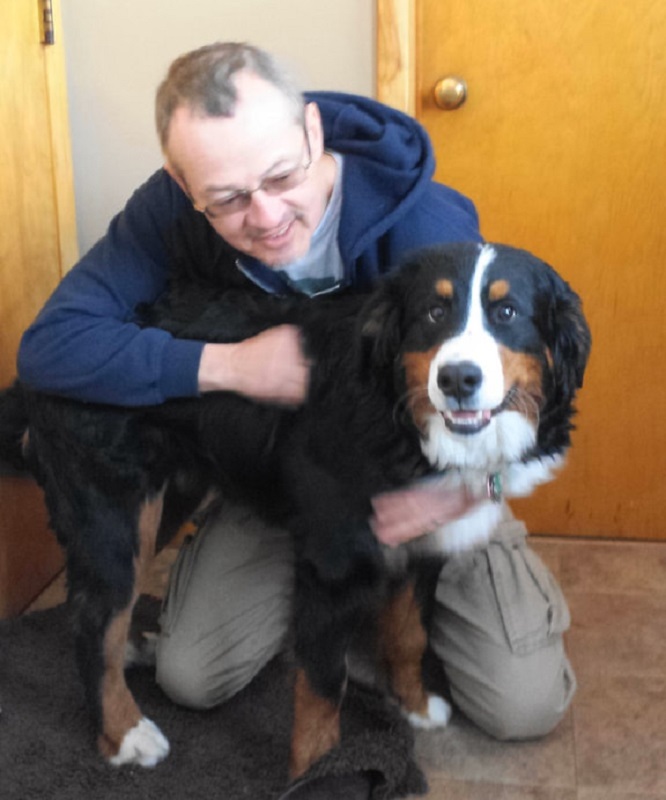Pets and Their People Blog
Weathering Your Dog’s Fear of Thunderstorms
Thunderstorm season has begun. There are 80-90 million dogs in the USA alone, and I have read that 20% have noise phobias. It can be debilitating for dogs, and life-changing for their people.
My friend, Lisa, lives with such a dog, Sweet Min, who was very fearful of storms, fireworks and other sounds. Lisa has worked diligently to improve Min’s quality of life, and I wrote this post to tell her story of discovering what has helped, from a pet steward’s perspective.

(Photo: Lisa G.)
Is Your Dog Frightened of Thunderstorms?
Many dogs suffer noise phobias, such as fear of thunderstorms or fireworks. Does Lisa’s description below sound familiar?
“Min was terrified of storms when I first got her. Shaking, pacing, panting, terrified. Over the years, she gradually has gotten better about tolerating them, now that we have our storm routines.
“Many people don’t fully realize how terrified their dogs actually are of storms. They think the dog will just work through it and/or get over it. Unlike us, though, dogs don’t understand why a storm is making the sounds it’s making. They don’t understand the changes in barometric pressure like we do. Min knows a storm is coming well before it hits.”
I provided resources to inform Lisa of various ways she may help Min feel safer and more comfortable, such as the guide published by Karolina Westlund, PhD. (See also Resources at the end of this post.) As a savvy dog steward, who is fully invested in the welfare of her dogs, Lisa applied the information, determining what was helpful and what was not.
Each dog is an individual, so what helps one dog immensely, may not be very helpful to another.
Before the Storm
Lisa described to me her experience of helping Min cope with storms:
“If bad weather is predicted, I keep an eye on when it’s supposed to hit my area, so I can get Min outside for a potty break before the pressure starts changing. Of course, she feels it well before I do, and I may miss the window a bit. Sometimes high value foods will help to get her outside just long enough for her to do her business. If she is holding her bladder too long, or needs to poop, that can contribute to her overall anxiety.
“Min does well with calming dog chews, and I’ll often give her one of those shortly before the storm starts. She also responds well to a ThunderShirt®, which I’ll spray with ADAPTIL.
“Min’s most important tool to help deal with storms was to find a safe space she could always get to.

(Photo: Lisa G.)
“I purchased a soft sided little hide out/tent for her. She will use that while in our lower level, and it helps muffle the sound of the storm. When on the main level of our house, she chooses the bathtub as her safe place. Now, what I’ll do is put blankets in the tub and turn on the vent fan to help muffle the sound of the storm. One reason she likes the tub is because she can get to it at any time.
While she’s in the tub, I’ll sit with her if I can for a while and check on her. I’ll offer her food, treats, and/or a frozen KONG. KONGs can be great for keeping her focused on something other than the storm. One thing I never do is force her to come out of the tub. I want her to know that she can have her safe space as long as she needs it.“
After the Storm
“As the storm subsides, I turn off the fan, so she can more easily hear the normal sounds of the house again. If she doesn’t come out on her own, I’ll check on her now and then, and ask if she wants to go potty, or get a treat. Again, I don’t force her, but I encourage her to start going about her regular routines, to help her get out of ‘storm’ mode. I’ll take her ThunderShirt off, and that often is the cue that it’s safe again. When she doesn’t come out of the tub, I go about my daily routines, which helps her to start going about her own routines again.
“It has taken some time, but now that Min knows her safe spaces are there, if a storm comes up while we are sleeping, she will more often stay in the bedroom now. She may want to lay as close to me as she can. I think just having the comfort of knowing she can get to her safe space helps keep her calm enough to not have to always use it.
“It took time and patience, but now that we have our storm routine down, Min rarely shakes like she used to, and she recovers more quickly.”

(Photo: Faye Antolec)
My advice to pet guardians is to consult a force-free certified canine behavior consultant for help. There are many options available to help pets feel safer.

About the Author
Daniel H. Antolec, PCT-A, CCBC-KA, CPDT-KA began teaching dogs in 2011 and founded Happy Buddha Dog Training .
He teaches dogs in a way that makes it fun for pet stewards and pets alike.
Resources
Cottam et al. (2013). The effectiveness of the Anxiety Wrap in the treatment of canine thunderstorm phobia: An open-label trial. https://doi.org/10.1016/j.jveb.2012.09.001
Crowell-Davis et al. (2003). Use of clomipramine, alprazolam, and behavior modification for treatment of storm phobia in dogs. https://doi.org/10.2460/javma.2003.222.744
DePorter et al. (2012). Harmonease Chewable Tablets reduces noise-induced fear and anxiety in a laboratory canine thunderstorm simulation: A blinded and placebo-controlled study. https://doi.org/10.1016/j.jveb.2011.05.024
Dodds, W. Jean, DVM (2019). The Effect of Acupuncture on the Reaction of Dogs to Thunder
Giussani et al. (2014). Evaluation of the efficacy of Adaptil® tablets versus placebo in the management of firework fears in dogs.
Graham et al. (2005). The influence of olfactory stimulation on the behaviour of dogs housed in a rescue shelter. https://doi.org/10.1016/j.applanim.2004.08.024
King et al., (2014). The effect of a pressure wrap (ThunderShirt®) on heart rate and behavior in canines diagnosed with anxiety disorder.
Landsberg et al. (2015). Dog-appeasing pheromone collars reduce sound-induced fear and anxiety in beagle dogs: a placebo-controlled study. DOI: 10.1136/vr.103172
Leeds & Wagner (2009). Through a Dog’s Ear: Using Sound to Improve the Health and Behavior of Your Canine Companion.
Pike et al. (2015). An open label prospective study of the use of L-theanine (Anxitane®) in storm sensitive client owned dogs. https://doi.org/10.1016/j.jveb.2015.04.001

